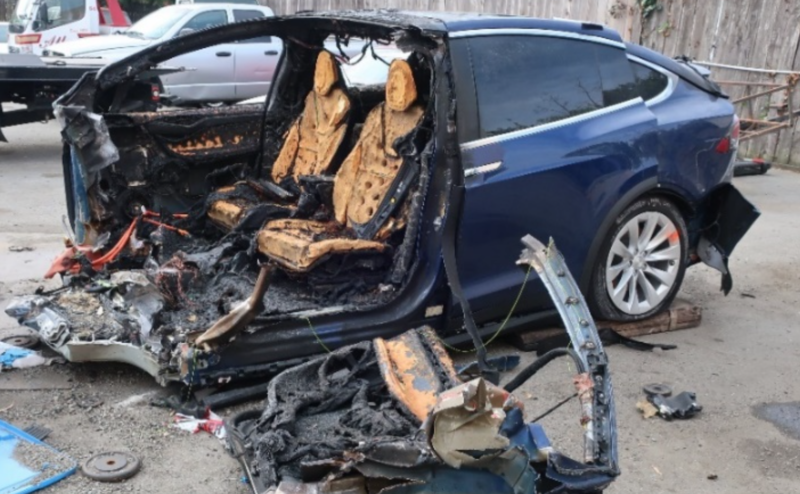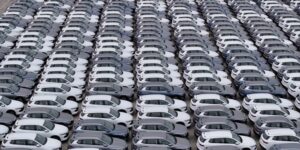
Tesla and its controversial Autopilot driver assistance system goes on trial again today in California. It’s fighting a wrongful death lawsuit filed by the family of Walter Huang, an Apple engineer who was killed in 2018 when his Tesla Model X drove head-first into a highway gore. But despite the findings of a highly critical National Transportation Safety Board investigation, Tesla may well win in court—California juries let the automaker off the hook in two separate trials last year.
Regular complaints
Huang died on March 23, 2018, when his Model X crashed at 70 mph into a concrete divider on US Highway 101, apparently confused by an interchange with State Highway 85 to its left.
Huang trusted Tesla Autopilot, the carmaker’s partially automated driving system that, at the time, combined forward-looking radar and optical sensors to control the car’s speed on the road relative to other vehicles and keep it centered within the lane. (In the years since, Tesla has abandoned the use of forward-looking radar, relying on just optical cameras instead.)
The lawsuit claims that he “reasonably believed the 2017 Tesla Model X vehicle was safer than a human-operated vehicle” thanks to “designed-in programs, software, hardware, and systems that would eliminate the risk of harm or injury to the vehicle operator caused by the vehicle failing to drive at safe speeds, failing to operate only within marked travel lanes, failing to avoid other vehicles or obstacles while driving on highways, or accelerating into fixed objects or vehicles while in autopilot mode.”
His reason for this trust? The way that Tesla, and its CEO Elon Musk, repeatedly referred to the system.
In reality, the system was little different from other cars fitted with adaptive cruise control and lane-keeping, apart from a much looser operation design domain that allowed drivers to go long periods without putting their hands on the wheel rather than the industry-standard 15 seconds. In fact, Tesla’s original Autopilot technology supplier ended its relationship with the electric vehicle company, stating that Tesla “was pushing the envelope in terms of safety.”
Huang had reason to pay attention to his car at that particular spot on the 101. His Model X drifted toward the highway gore on at least two occasions within the four weeks leading up to the fatal crash. That data was clear from the logs recovered from the car’s SD card but also confirmed by messages between Huang and a friend, Hans Ting.
After the second near-miss on March 19, Ting asked Huang, “Do you feel AP [Autopilot] is better? I feel it is better… less jerky.” Replying in Chinese, Huang told his friend, “Nope, I feel almost the same. Almost led me to hit the median again this morning. Each time at the 85 separation it would drive me towards the middle of the two lines.”
Playing a game on his phone
Sadly, Huang was not paying attention on March 23. Instead, Tesla claims that he was playing Sega Total War: Three Kingdoms on his iPhone. Huang had a pair of Apple-issued smartphones, with enhanced logging for troubleshooting.
Some of these logs were recovered with the help of Apple from one of the two phones following the crash, which confirmed that he regularly played Three Kingdoms while commuting to work, including throughout the week leading up to his death.
Further, the game “was active during the driver’s trip to work,” according to the NTSB. But there were no log entries related to Three Kingdoms recorded during the final 17 minutes.
NTSB hands out plenty of blame
The crash became the focus of an NTSB investigation, which reported its findings in 2020. The board found plenty to criticize. Tesla came under heavy fire for both misleading marketing and for its lax approach to the system’s operational design domain.
“Every vehicle sold to US consumers still requires the driver to be actively engaged in the driving task, even when advanced driver assistance systems are activated. If you are selling a car with an advanced driver assistance system, you’re not selling a self-driving car. If you are driving a car with an advanced driver assistance system, you don’t own a self-driving car,” said NTSB Chairman Robert Sumwalt.
But the California highway agency CalTrans was blasted by the NTSB for not having replaced a damaged crash attenuator in front of the concrete barrier, an act that might have saved Huang’s life.
Much of the NTSB’s ire was directed toward the National Highway Traffic Safety Administration. NHTSA, unlike the NTSB, has regulatory powers over the automotive industry and could have reined in Tesla had it chosen to.
Lawsuit
Huang’s family brought their suit against Tesla and the state of California in 2019. It alleges that the Model X “lacked a properly designed system for crash avoidance,” and that “a safe and properly functioning automatic emergency braking system should prevent a vehicle from accelerating into any fixed object”—another feature it lacked, despite the fact that such technology existed at the time and was available in many other makes and models, including cars with much lower prices than a Tesla Model X.
The suit alleges that Tesla caused the wrongful death of Huang and was responsible for selling a defective product that was “unreasonably dangerous when used in a reasonably foreseeable manner. For example, we now know that Tesla faked a widely viewed Autopilot demonstration video in 2016, something personally overseen by Musk himself.
Tesla is also accused of negligence; the suit states that “a reasonable manufacturer, supplier, or seller in the same or similar position… would have issued a recall, instituted a product exchange program, and/or provided a warning to the public, purchasers, users, and consumers of the 2017 Tesla Model X of the product’s affected condition.”
Autopilot was finally subject to a safety recall in 2023, following hundreds of complaints to NHTSA.
California is also accused of failing to maintain its highways in safe condition, particularly the crash attenuator, which the suit says “was either altered, modified, or damaged in a prior collision more than one week before the incident,” and that the agency had plenty of time to fix it in the days leading up to Huang’s crash.
For its part, Tesla has previously stated that Huang’s hands were not detected on the steering wheel in the six seconds before the fatal crash and that he should have been paying attention, not playing with his phone. “The sole cause of this crash was his highly extraordinary misuse of his vehicle and its Autopilot features so that he could play a videogame,” Tesla said in a filing.
The plaintiffs have even tried to challenge this evidence, who told Ars they were never given an opportunity to depose the Apple engineer that Tesla says determined Huang was playing on his phone at the time.
Although the NTSB report excoriated Tesla, its conclusions that Huang, Tesla, and CalTrans all shared blame will not be shared with the jury—just the report’s factual findings. Last April, a California jury found that Autopilot did not perform in an unsafe manner during a 2019 crash that left a Tesla driver with severe injuries. And in October 2023, a second jury in California exonerated Autopilot for a fatal crash that occurred in 2019.


























